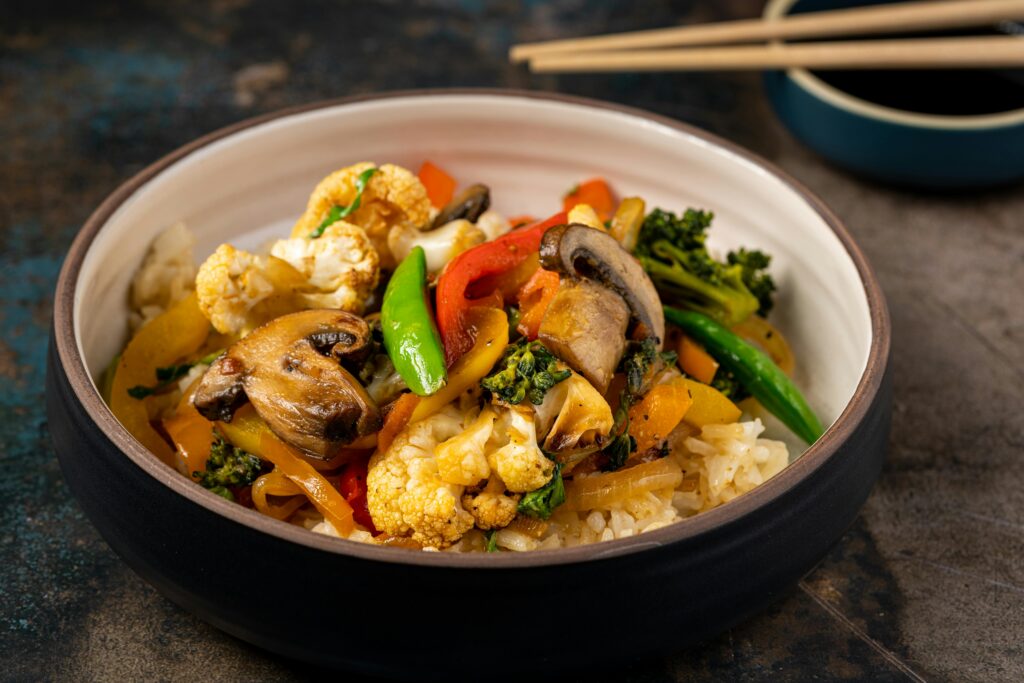Plant-based eating is no longer just a trend—it’s a global movement that celebrates health, sustainability, and culinary creativity. From ancient traditions to modern innovations, vegetarian and vegan cuisines offer a vibrant tapestry of flavors, textures, and stories. Whether you’re a committed vegan, a curious traveler, or simply seeking to add more plant-based meals to your diet, exploring vegetarian and vegan delights worldwide is a journey of discovery and delight. This guide will take you across continents, highlighting iconic dishes, cultural roots, and practical tips for savoring plant-based cuisines wherever you roam.
Why Plant-Based Eating Is Flourishing Worldwide
The reasons for the global rise of vegetarian and vegan eating are as diverse as the dishes themselves:
- Health: Plant-based diets are linked to lower risks of heart disease, diabetes, and certain cancers.
- Sustainability: Eating more plants reduces environmental impact, conserves water, and lowers greenhouse gas emissions.
- Ethics: Many choose plant-based diets to avoid animal suffering and support more humane food systems.
- Culinary curiosity: Chefs and home cooks are reimagining classic dishes and inventing new ones, making plant-based eating exciting and accessible.
Ancient Roots: Plant-Based Traditions Across Cultures
Long before “vegan” and “vegetarian” became buzzwords, many cultures embraced plant-based eating as part of their heritage:
India: The Spiritual Home of Vegetarianism
India is a paradise for vegetarians and vegans. Religious traditions like Hinduism, Jainism, and Buddhism have promoted plant-based diets for centuries. Indian cuisine offers an astonishing variety of vegetarian dishes, from creamy dals and spicy curries to crispy dosas and fragrant biryanis.
- Must-try dishes: Chana masala, aloo gobi, masoor dal, samosas, dosas, baingan bharta, and vegan-friendly thalis.
- Vegan tip: Ask for dishes without ghee (clarified butter) or paneer (cheese).
Middle East and Mediterranean: Naturally Plant-Rich
The Mediterranean diet, often hailed as one of the world’s healthiest, is rich in vegetables, legumes, grains, and olive oil. Middle Eastern cuisines feature a wealth of vegetarian and vegan options.
- Must-try dishes: Hummus, falafel, tabbouleh, baba ghanoush, stuffed grape leaves (dolma), fattoush, and mujadara.
- Vegan tip: Double-check for yogurt or cheese in salads and dips.
East Asia: Balance and Simplicity
Buddhist traditions have inspired plant-based eating in China, Japan, Korea, and Southeast Asia. Tofu, tempeh, and seitan are staples, and vegetables take center stage.
- Must-try dishes: Mapo tofu (vegan version), vegetable sushi, miso soup, japchae (Korean sweet potato noodles), stir-fried greens, and Thai green curry with tofu.
- Vegan tip: Watch for fish sauce, oyster sauce, or bonito flakes in broths and sauces.
Africa: Hearty and Wholesome
Many African cuisines feature plant-based staples like beans, lentils, yams, and greens. Ethiopian cuisine is especially vegan-friendly, thanks to fasting traditions that exclude animal products on certain days.
- Must-try dishes: Injera with lentil stews (misir wot), kik alicha (split pea stew), plantain dishes, and North African tagines with chickpeas and vegetables.
Latin America: Beans, Corn, and Color
Latin American cuisines offer a rainbow of vegetarian options, often centered around beans, corn, squash, and tropical fruits.
- Must-try dishes: Black bean soup, arepas, guacamole, nopales (cactus), picadillo, and vegan tamales.
- Vegan tip: Ask for dishes without cheese, crema, or lard.
Modern Vegan and Vegetarian Movements
Today, plant-based eating is thriving in cities and countries around the world. Vegan restaurants, food trucks, and pop-ups are redefining what it means to eat green.
Europe: Innovation and Tradition
- Berlin, Germany: Known as the vegan capital of Europe, Berlin boasts hundreds of vegan eateries, bakeries, and markets.
- London, UK: From vegan fish and chips to plant-based afternoon teas, London’s food scene is a haven for vegans and vegetarians.
- Barcelona, Spain: Creative tapas bars and vegan paella make Barcelona a must-visit for plant-based travelers.
North America: Diversity and Creativity
- Portland, USA: A pioneer in vegan comfort food, with everything from vegan doughnuts to barbecue.
- Toronto, Canada: Multicultural neighborhoods serve up plant-based versions of global favorites.
- Los Angeles, USA: Trendsetting vegan cafes, food trucks, and fine-dining experiences abound.
Australia and New Zealand: Fresh and Flavorful
- Melbourne, Australia: Known for its vibrant café culture and inventive vegan brunches.
- Auckland, New Zealand: Plant-based Maori and Pacific-inspired dishes are gaining popularity.
Iconic Vegetarian and Vegan Dishes to Try Worldwide
Asia
- Vietnam: Fresh spring rolls (goi cuon) with tofu and herbs.
- Japan: Vegetable tempura and vegan ramen.
- Thailand: Pad Thai Jay (vegan Pad Thai) and coconut milk-based curries.
Europe
- Italy: Eggplant parmigiana (vegan version), mushroom risotto, and pizza marinara.
- France: Ratatouille, socca (chickpea pancake), and vegan pastries in Paris.
Middle East
- Lebanon: Manakish (za’atar flatbread), lentil soup, and vegan-friendly mezze platters.
Africa
- Morocco: Vegetable tagine with preserved lemon and olives.
- West Africa: Peanut stew (groundnut soup) with sweet potatoes and greens.
Americas
- Mexico: Vegan enchiladas, chiles rellenos, and esquites (street corn).
- Peru: Quinoa salad, causa (potato terrine), and vegan ceviche.
Satisfying Plant-Based Street Food Adventures
Street food isn’t just for meat lovers. Around the world, you’ll find plant-based snacks and meals that are quick, affordable, and packed with flavor.
- Falafel wraps in Cairo and Tel Aviv
- Vegan bánh mì in Hanoi
- Corn on the cob with chili and lime in Mexico City
- Vegan empanadas in Buenos Aires
- Roasted chestnuts in Istanbul
- Samosas and pakoras at Indian street stalls
Tips for Traveling as a Vegetarian or Vegan
- Learn key phrases: Know how to say “no meat, no fish, no dairy” in the local language.
- Research ahead: Use apps and blogs to find vegetarian and vegan-friendly restaurants.
- Visit markets: Stock up on fresh fruits, nuts, and local snacks.
- Be flexible: In some places, plant-based options may be limited—get creative with side dishes and salads.
- Communicate clearly: Explain your dietary needs politely and ask about hidden animal products.
- Join food tours: Many cities offer vegan or vegetarian food tours for a deeper dive into local cuisine.
- Bring snacks: Carry energy bars, nuts, or dried fruit for long journeys or remote areas.
The Future of Plant-Based Cuisine
From lab-grown meats to plant-based fine dining, the future of vegetarian and vegan food is bright and innovative. Chefs are experimenting with jackfruit “pulled pork,” mushroom-based burgers, vegan cheeses, and dairy-free desserts that rival their traditional counterparts. As awareness grows, plant-based dining is becoming more accessible, delicious, and celebrated worldwide.
Final Thoughts: Savoring the World, One Plant-Based Bite at a Time
Vegetarian and vegan cuisines are a testament to the creativity and diversity of global food culture. They offer a delicious way to care for your health, the planet, and your taste buds. Whether you’re exploring ancient Indian curries, savoring Mediterranean mezze, or trying a vegan burger in Berlin, plant-based eating is a journey of flavor and discovery. So pack your appetite, embrace new tastes, and savor the world—one plant-based bite at a time.


